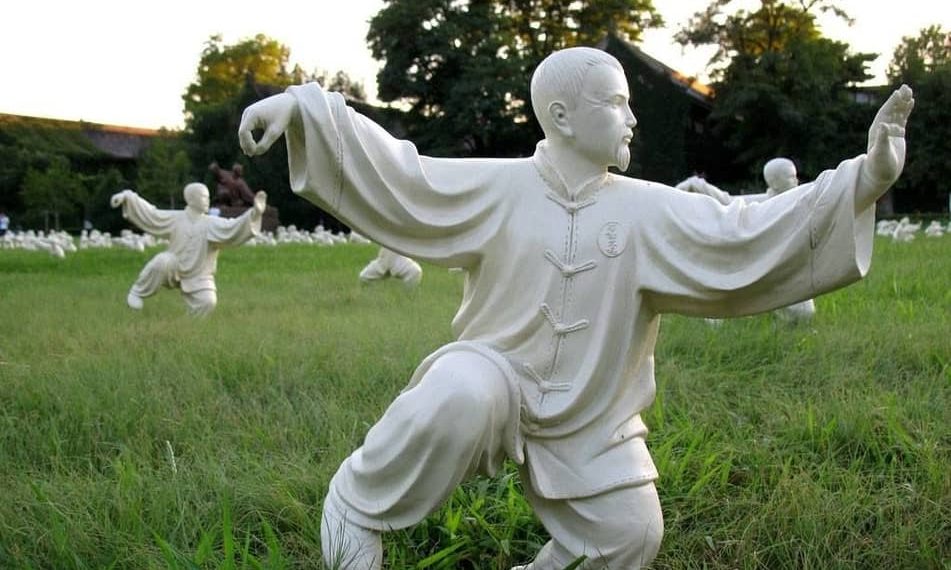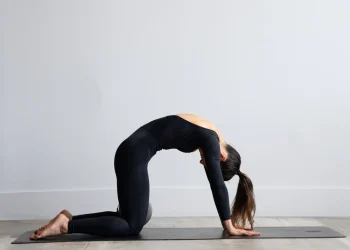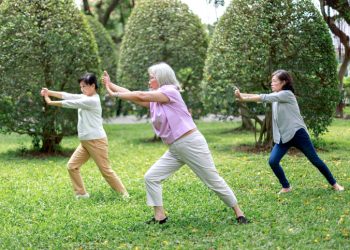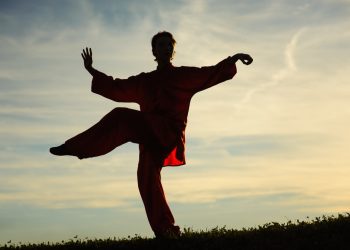Tai Chi walking, known as zǒu bù in Chinese, represents one of the most fundamental yet profound practices within the ancient martial art of Tai Chi Chuan. Unlike ordinary walking, Tai Chi walking transforms simple locomotion into a meditative movement practice that cultivates balance, strengthens the legs, improves body awareness, and harmonizes the flow of qi (vital energy) throughout the body. This comprehensive guide explores the essential techniques, proper form, body alignment principles, and progressive training methods that will help practitioners develop mastery in this foundational skill.
Understanding Tai Chi Walking
Tai Chi walking differs dramatically from conventional walking in its emphasis on mindfulness, weight distribution, and energetic cultivation. Where normal walking often happens automatically and unconsciously, Tai Chi walking requires deliberate attention to every aspect of movement. Each step becomes a study in balance, coordination, and the seamless transfer of weight from one leg to another. The practice serves multiple purposes: it develops the strong, stable legs necessary for Tai Chi forms, trains practitioners in the essential principle of distinguishing substantial from insubstantial (yin and yang), and creates a moving meditation that calms the mind while energizing the body.
The fundamental principle underlying all Tai Chi walking is the concept of rooting. This refers to the ability to sink one’s weight completely into the supporting leg, creating a solid connection with the earth while maintaining an upright, relaxed upper body. This rooting creates stability without tension, allowing the practitioner to move with both power and grace. Additionally, Tai Chi walking emphasizes slowness and continuity—movements flow without interruption, like water in a stream, maintaining constant motion without jerky starts or stops.
Fundamental Body Alignment
Proper body alignment forms the foundation of effective Tai Chi walking. The alignment begins at the crown of the head and extends down through the entire body to the feet. Imagine a string gently pulling the crown of your head upward toward the sky—this creates length in the spine without strain. The chin should be slightly tucked, not jutting forward, which aligns the cervical spine properly and prevents tension in the neck and shoulders.
The shoulders must remain relaxed and dropped, never hunched or raised toward the ears. Many beginners unconsciously lift their shoulders when concentrating, creating unnecessary tension that blocks the free flow of energy. The chest should be slightly concave, neither puffed out militarily nor collapsed forward. This subtle sinking of the chest helps relax the upper body and allows qi to settle into the lower abdomen, specifically the area known as the dantian, located approximately two inches below the navel.
The pelvis plays a crucial role in proper alignment. It should be tucked slightly under, as if sitting on a high stool, which straightens the lower back and prevents excessive lumbar curvature. However, this tucking should not be exaggerated—the goal is a neutral spine with natural curves maintained throughout. The knees must always remain slightly bent, never locked, which protects the joints and maintains the flowing quality of movement essential to Tai Chi practice.
Basic Tai Chi Walking Technique
The Starting Position
Begin in a natural standing position with feet parallel and shoulder-width apart. Distribute your weight evenly between both feet. Take several deep breaths, allowing your body to relax and settle. Feel your feet making solid contact with the ground. Soften your knees slightly and release any tension in your hips, shoulders, and neck. This preparatory stance establishes the calm, centered state necessary for mindful walking practice.
The Weight Shift
The weight shift represents the heart of Tai Chi walking. Begin by slowly transferring 100 percent of your weight onto your right leg. This transition should happen gradually and smoothly, taking several seconds to complete. As the weight shifts, feel your right leg becoming substantial (full) while your left leg becomes insubstantial (empty). The substantial leg supports your entire body weight, while the insubstantial leg becomes light enough that you could lift it without any adjustment of your torso.
During this weight transfer, maintain your upright alignment—resist the temptation to lean toward the weighted side. The movement comes from the waist and hips, not from shifting the shoulders or tilting the upper body. Think of your head as a bubble floating on water, remaining level as the foundation moves beneath it. This separation between upper and lower body represents a key principle in Tai Chi: the waist directs, the legs support, and the upper body remains relaxed and responsive.
The Step Forward
With all your weight on the right leg, the left leg is now free to move. Lift the left heel first, keeping the toe in contact with the ground momentarily. Then lift the entire foot, raising it only as high as necessary—typically just an inch or two off the ground. Move the left leg forward by rotating from the hip, keeping the knee aligned over the foot. The foot should travel in a straight line forward, not swinging out to the side.
Place the heel of the left foot down first, touching the ground gently like a cat stepping. The foot should land empty—meaning no weight transfers immediately upon contact. Roll gradually through the foot from heel to toe as you begin shifting weight forward. This deliberate, controlled placement prevents jarring impacts and maintains the smooth, continuous quality essential to Tai Chi movement. The stepping foot should land with the toes pointing straight ahead or very slightly inward, never splayed outward.
Completing the Step
Once the left heel contacts the ground, begin the slow process of transferring weight forward onto the left leg. This weight shift mirrors the initial transfer, moving gradually from the rear leg to the forward leg. As weight transfers, the left knee bends naturally to absorb the load while remaining aligned over the left foot—the knee should never extend past the toes. Continue the transfer until 100 percent of your weight rests on the left leg, completing the cycle.
The rear foot remains flat on the ground as long as possible during the forward weight shift. Only when most of the weight has transferred does the right heel begin to lift. Eventually, when fully committed to the front leg, the right foot becomes completely empty, with only the toe touching for balance. This back toe serves as a pivot point, maintaining connection to the ground while the leg prepares for the next step.
Key Practice Points
Several critical points deserve special attention in Tai Chi walking practice:
- Maintain Constant Motion: Unlike normal walking with its distinct phases of stance and swing, Tai Chi walking flows continuously. One movement melts into the next without pause or hesitation. Even momentary stops disrupt the energetic flow and indicate incomplete mastery of the technique.
- Breathe Naturally: Coordinate breathing with movement, but never force or hold the breath. Generally, exhale as weight shifts forward and inhale as it comes back, but this coordination should emerge naturally rather than being rigidly imposed. The breath remains soft, deep, and originating from the lower abdomen.
- Relax the Hips: Hip flexibility and relaxation are essential for proper weight transfer. Stiff, tense hips prevent the smooth sinking of weight into the legs and obstruct the flow of movement. Regular practice gradually opens and loosens the hip joints, increasing range of motion and ease of movement.
- Stay Centered: The center of gravity should remain steady, moving forward in a straight line at a constant height. Bobbing up and down or swaying side to side indicates improper technique—typically too much knee bending or failing to maintain upright alignment through the spine.
- Mind the Gap: The distance between feet should remain consistent—typically shoulder-width apart. Steps that are too narrow compromise stability, while steps too wide create tension and reduce mobility. Find the width that feels most natural and balanced for your body structure.
Progressive Training Methods
Beginner Level: Establishing Foundation
New practitioners should begin with stationary weight shifting exercises before attempting actual walking. Stand with feet parallel and practice shifting weight from one leg to the other, focusing exclusively on maintaining proper alignment and complete weight transfer. This might seem simple, but it builds the essential awareness and control needed for walking practice. Spend several weeks on these basic weight shifts, performing them daily for 10-15 minutes.
Once comfortable with stationary shifts, begin taking single steps forward, pausing fully on one leg before proceeding to the next step. This broken rhythm allows careful examination of body position and alignment at each phase of the movement. Practice five to ten individual steps, rest briefly, then repeat. Gradually increase the number of consecutive steps as strength and balance improve.
Intermediate Level: Developing Flow
Intermediate practitioners work to eliminate pauses between steps, creating continuous flowing movement. Begin linking three to five steps together smoothly, then gradually extend to longer sequences of 10-20 steps. Focus intensifies on maintaining constant speed—neither accelerating nor decelerating during the sequence. Many practitioners find counting helps maintain rhythm: mentally count to eight during each complete step cycle, ensuring consistent pacing.
At this stage, introduce backward walking, which presents unique challenges in balance and coordination. Walking backward requires even greater body awareness since you cannot see where you’re stepping. Begin with just a few steps, using a wall or partner for safety if needed. The technique mirrors forward walking but in reverse: the toe touches first, then the weight settles onto the full foot as you shift back. Backward walking particularly develops sensitivity in the trailing leg and strengthens the muscles supporting the knees.
Circle walking adds another intermediate dimension to practice. Walk in a circle, maintaining all the principles of straight-line walking while negotiating the curve. The inside foot points slightly inward while the outside foot adjusts to maintain the circular path. This variation develops the ability to maintain centeredness while changing direction—a skill that transfers directly to Tai Chi forms, which include constant directional changes.
Common Mistakes and Corrections
Understanding common errors helps practitioners self-correct and progress more rapidly. Perhaps the most frequent mistake involves incomplete weight transfer—leaving some weight on what should be the empty leg. This double-weighting prevents the true emptiness necessary for free, unencumbered movement. The correction requires conscious attention to sinking completely into the substantial leg until the other leg feels genuinely light and movable.
Another common error is rushing. In eagerness to walk longer distances, practitioners often sacrifice quality for quantity, moving too quickly to maintain proper form. Remember that in Tai Chi, slower is often better, especially during learning phases. Each step should receive full attention and proper execution. Speed develops naturally over time as technique becomes more refined and habitual.
Leaning forward, backward, or to the side represents a postural error that undermines the practice’s benefits. This leaning typically results from insufficient leg strength or improper weight distribution. The correction involves consciously maintaining vertical alignment through the torso while ensuring complete weight transfer occurs at the waist and hips rather than through upper body compensation. Building leg strength through regular practice gradually eliminates this tendency.
Tai Chi walking represents far more than a simple mobility exercise—it embodies the essential principles of Tai Chi practice in their most accessible form. Through dedicated practice of these walking techniques, practitioners develop the strong legs, precise body awareness, and refined balance that underpin all advanced Tai Chi work. The journey from basic weight shifting to flowing, continuous walking cultivates patience, mindfulness, and body-mind integration.
Progress in Tai Chi walking comes through consistent, mindful practice rather than forced effort. Each session offers opportunities to refine alignment, deepen awareness, and strengthen the connection between body and mind. Whether walking for five minutes or fifty, approach the practice with full attention and commitment to proper form. Over time, these seemingly simple movements transform not only how you practice Tai Chi but how you move through daily life, bringing grace, balance, and awareness to every step you take.
- understand what is tai chi walking
- how to apply these techniques correctly
- proper form and techniques
- coordination techniques for better movement
- posture techniques and alignment
- principles behind the techniques
- breathing coordination techniques
- exercises to improve coordination
- practical tips for mastering techniques
- body awareness in technique practice






